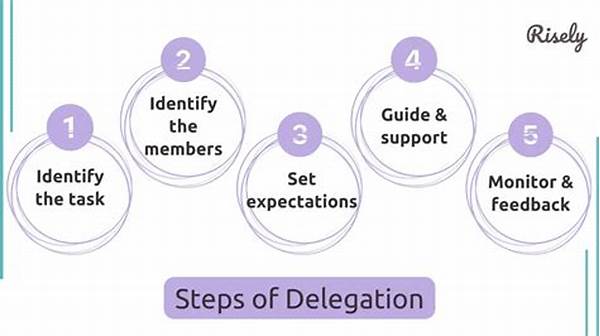In the fast-paced world we live in, time is often the most precious commodity. Have you ever felt like there are just not enough hours in a day to get everything done? Welcome to the club! But fear not, because today we’re diving deep into the art of delegation—a skill that can truly revolutionize the way you work. Gone are the days where only the Getting Things Done (GTD) method dominated the productivity scene. Now, it’s time to go beyond GTD: 6 powerful delegation techniques that free up 10 hours of your week! Consider it your invitation to rediscover your own productivity by exploring some incredibly effective methods that promise not only efficiency but also peace of mind.
Read More : How To Beat Procrastination With Simple Tricks
Delegation is more than just a buzzword; it’s a vital managerial skill that can transform your workload. By mastering delegation, you’re not simply pushing tasks onto others; you’re embracing the opportunity to optimize your workflow, allowing you to focus on higher-level tasks that truly matter. This first technique we’re focusing on is known as the “Do, Defer, Delegate” method. Imagine standing in front of a decision tree, and at each branch, you assess whether you should “Do” it yourself, “Defer” it for later, or “Delegate” it to someone else. By using this method, you’ll gain clarity and control over your to-do list, filtering out tasks that drain your time and energy.
Take Karen, a marketing manager, as a testament to the power of delegation. Overwhelmed by endless emails and reports, Karen decided to implement the “Do, Defer, Delegate” technique. Soon, she was handing off smaller tasks to her assistant and streamlining significant projects with her team. The outcome? Karen regained her evenings, and she started focusing on strategy and innovation—areas where she truly excelled.
Unlocking Additional Time and Potential
The beauty of delegation doesn’t stop with the “Do, Defer, Delegate” method. It enhances team collaboration, fosters professional growth, and empowers others to step up. Thus, as we move beyond GTD: 6 powerful delegation techniques that free up 10 hours of your week! Keep in mind that mastering delegation is both an art and a science. The right balance can lead to astonishing growth, performance, and yes, finally claiming those coveted 10 extra hours back each week.
There’s a buzzword echoing through the corporate halls and remote offices alike: delegation. Once mistaken as mere task allocation, delegation is undergoing a renaissance, challenging the traditional frameworks of productivity. Instead of a rigid structure, think of delegation as a dance—a choreography of tasks that balances workload and fosters teamwork. This fresh perspective is emblematic of the shift beyond GTD: 6 powerful delegation techniques that free up 10 hours of your week!
Could it be that your ticket to better home work-life balance lies in delegating more effectively? The modern workspace is evolving, with flexible schedules and virtual teams becoming the norm. This dynamic landscape prompts a reevaluation of delegation, which Harvard Business Review notes, “is not just an option but a critical competency.” While automation tools alleviate some burdens, successful delegation is rooted in human interaction, understanding, and trust.
A New Age for Task Management
How, then, does one embrace this new age of task management? Consider the approach of defining team roles with clarity. By doing so, you align tasks with team members’ strengths, cultivating an environment of accountability and empowerment. Remember, delegation is not about offloading; it’s about entrusting. This shift in perspective distinguishes great leaders from mere managers.
Now, let’s highlight the “Results-Driven Delegation” technique, another powerful approach. Leaders focus on outcomes rather than procedures, giving team members the autonomy to innovate. By setting goals and parameters, yet allowing flexibility in the approach, leaders discover new efficiencies and creativity within their teams. This method is especially relevant when exploring beyond GTD: 6 powerful delegation techniques that free up 10 hours of your week!
The Emotional Side of Delegation
On an emotional level, delegation can build trust and motivation within the workplace. Employees who feel empowered to take on significant tasks often exhibit higher job satisfaction and productivity. This relational advancement is crucial; as noted in a recent Gallup study, engaged teams show a 21% increase in productivity.
What excites you about the prospect of reclaiming lost time? For many, it’s the allure of pursuing passions outside the confines of work. Whether it’s art, travel, learning, or simple relaxation, those 10 hours a week open up new worlds of possibility. The decision to delve into the realm of delegation taps into a poignant desire that speaks to the heart of every professional: a longing for balance and fulfillment.
Understanding Delegation through Real-Life Examples
Consider Mark, a tech entrepreneur, who fully embraced the Eisenhower Box technique. With deadlines looming, Mark classified tasks as either urgent or important. By delegating full authority over non-critical tasks to his assistant, Mark unlocked valuable hours to focus on strategic initiatives. Similarly, Lisa, a project manager, saw transformation through Kanban Boards. By visually mapping out tasks with her team, Lisa streamlined processes, resulting in increased transparency and efficiency.
In conclusion, stories like Mark’s and Lisa’s underscore the transformative power of delegation. By understanding the unique needs and potential of your team, you empower those around you to excel while reclaiming your time. Imagine the possibilities that await as you explore beyond GTD: 6 powerful delegation techniques that free up 10 hours of your week! The journey of improvement continues, unlocking productivity and balance—one task at a time.
How to Implement These Techniques
The implementation of these techniques requires a commitment to change and exploration. Start by defining your goals and assessing your current burdens. Which tasks elude completion week after week? Identify key areas where delegation would make the biggest impact. Engage your team by outlining this vision, encouraging feedback, and adopting a culture of open communication.
The approach is both scientific and artistic, blending analytics with intuition. Embrace the initial learning curve, and be prepared to iterate your methods. As stated by management expert Peter Drucker, “Efficiency is doing things right; effectiveness is doing the right things.” In the age of information, where time is a treasure, beyond GTD: 6 powerful delegation techniques that free up 10 hours of your week! becomes not just a slogan, but a guiding principle for a more optimized, fulfilling professional life.
Bringing Delegation to Life with Illustrations
A picture is worth a thousand words, and when it comes to understanding delegation, visual aids can bridge gaps in comprehension. Visual prioritization charts, for example, offer clarity at a glance, showing exactly where resources should be allocated. Interactive training modules transform theory into practice; by engaging learners in real-world scenarios, they utilize visuals to reinforce learning.
These assets help guide you beyond GTD: 6 powerful delegation techniques that free up 10 hours of your week! They bring theory into practice and inspire actionable change. From training videos to case study presentations, these tools are crafted to enliven the learning experience and ensure the lessons stick.
Finally, storytelling forms an essential component of this journey. When you hear testimonies from those who’ve successfully implemented these strategies, it’s like a beacon of hope—it reminds you that effective delegation is not just possible, it’s attainable. By leveraging these visual and narrative tools, you’ll navigate the delegation landscape with confidence and finesse, ultimately reclaiming time and improving productivity.


